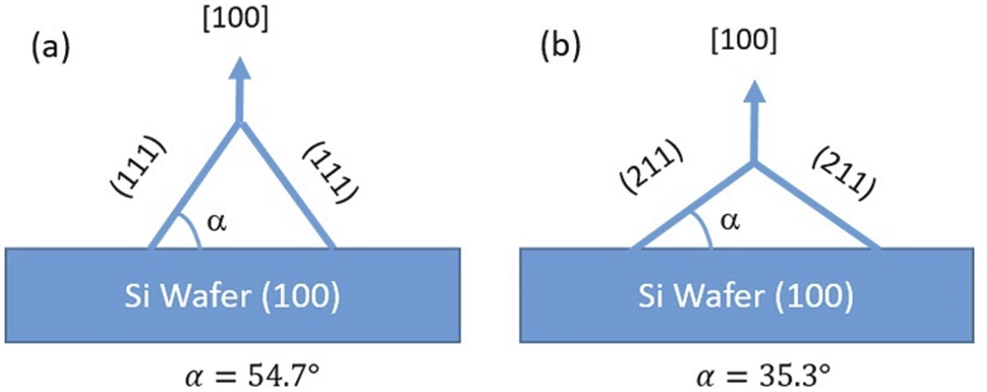Surface texturization is a route to improving the efficiency of silicon solar cells by enhancing their light trapping ability. In this paper, solargrade, monocrystalline, unpolished, silicon wafers were chemically processed via different routes before texturization. The effect of this pretexturization processing on the morphological evolution with corresponding changes in optical properties has been systematically studied with a scanning electron microscope, atomic force microscope, and UV-Vis spectrophotometer. It has been found that the uniformity and size distribution of pyramid structures, as well as the reflectance of the textured surfaces, depend on the pre-textured chemical processing. Moreover, it has also been found that etching the oxide layer with HF prior to texturization does not affect the optical properties of textured silicon substrates.
In this paper, commercially available as-cut raw silicon wafers were chemically treated via three different routes before texturization, and the effect of pre-texturization processing on the morphological evolution with corresponding changes in optical properties has been systematically studied and analyzed using state-of-the-art tools and techniques.
EXPERIMENTAL PROCEDURE Large-area, (130 mm × 130 mm) boron-doped, p-type, (100)- oriented, monocrystalline, solar-grade, unpolished silicon wafers with a resistivity of 1 Ω cm–3 Ω cm and a thickness of 190 μm–210 μm were used as a substrate material in our research work. The chemical processing carried out in this paper can be divided into two steps: (1) pre-textured cleaning and (2) chemical processing for texturization. Pre-texturization cleaning includes the removal of saw damage, organic contaminants, and natural oxides. To study the effects of pre-textured cleaning on texturization, the wafers were divided into three batches, named A, B, and C, and the surface of each batch was treated in a different route, as outlined in Table I. NaOH was used in combination with HF in route A, while only NaOH was used in route B to study the effect of HF on the texturization process. In route C, the piranha solution was used in combination with NaOH.
NaOH is mainly used to remove saw damage. The raw wafer was chemically polished in 10% NaOH at 70 ○C for 10 min, and then, it was rinsed with deionized (DI) water for 3 min–4 min. In this research work, DI water of conductivity 0.6 μS/cm was used as a solvent and for rinsing purposes. Removal of the naturally grown oxide layer from the silicon wafer was carried out by cleaning the wafer with 2% HF (by volume) for 3 min at room temperature and rinsing with DI water for 3 min–4 min.

The purpose of B-treated silicon is to study the effect of HF acid on the texturization process. As we know, HF treatment is carried out for the removal of native oxide or unwanted chemical oxide layers from the silicon surface, which is a common practice in semiconductor device fabrication. However, after texturization, the reflectivity is 1.20% for the A-treated surface and 0.934% for the Btreated surface, which apparently leads to the fact that the use of HF acid prior to texturization is redundant.
However, it was observed that when the silicon wafer, for batch A, was immersed in the alkaline solution, a huge amount of bubble starts to emerge from the silicon surface, but in the case of the Btreated surface, it happens 10 s–15 s after immersion in an alkaline solution bath, which can be attributed to the presence of an oxide layer on the silicon substrate. However, the roughness measurement from AFM images shows that the average RMS area roughness of the A-treated surface is 495 nm, whereas, for the B-treated surface, it is only 331 nm. It turns out that the use of HF acid results in the formation of larger pyramids, which is desired due to the fact that smaller pyramids often lead to local epitaxial growth and possible capture of wet chemical contaminants as the substrate undergoes subsequent treatment for solar cell fabrication.